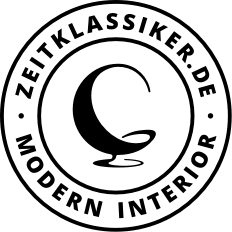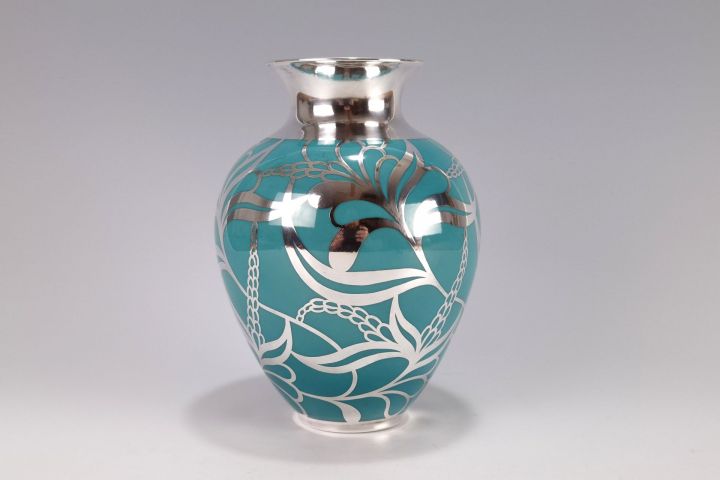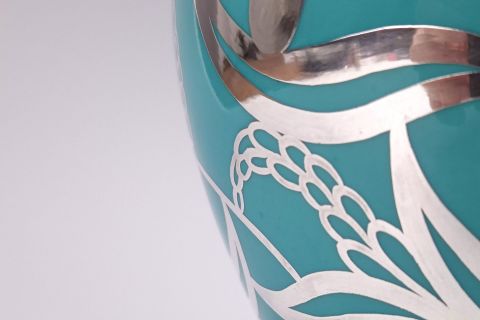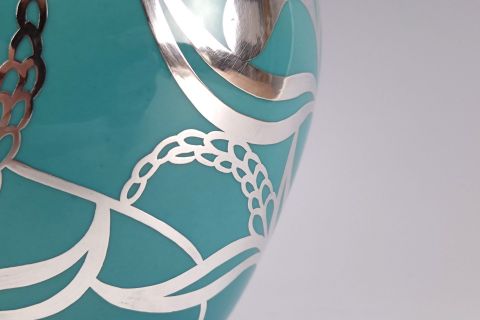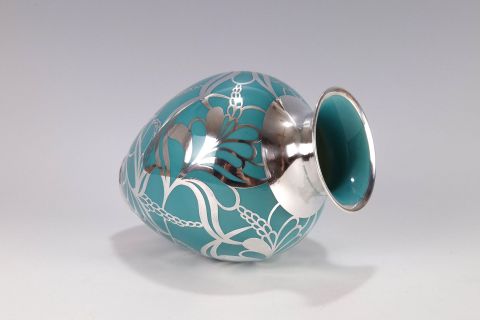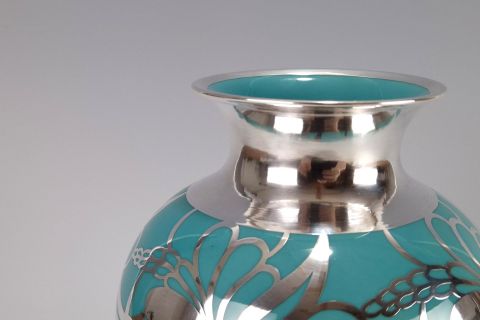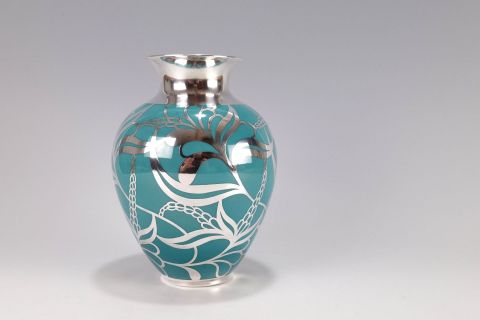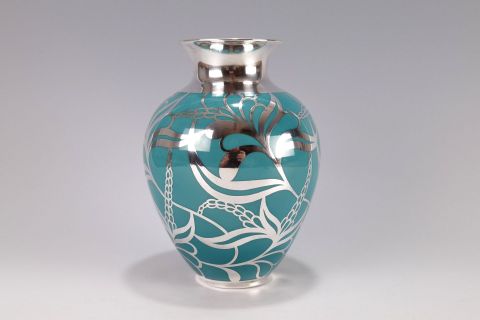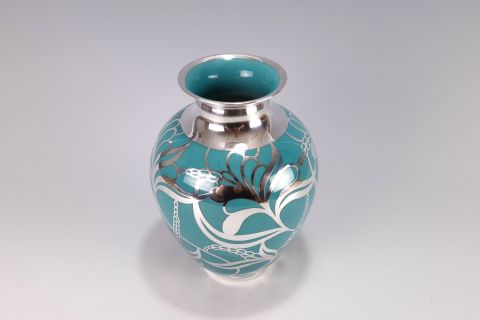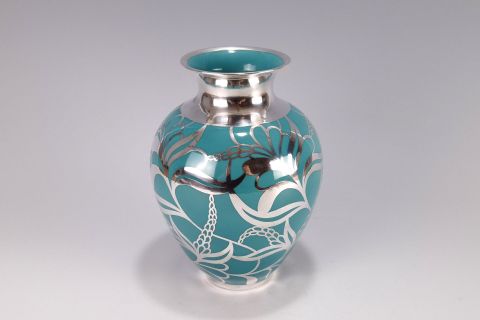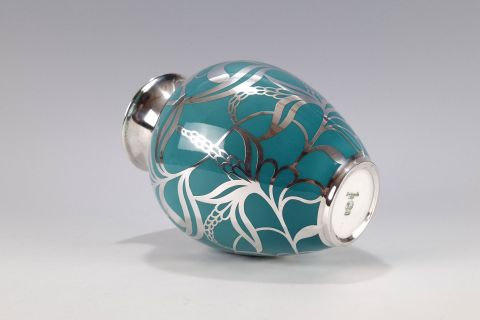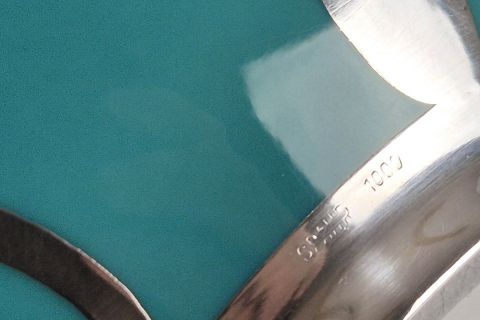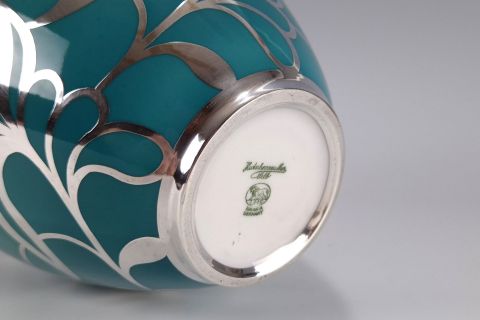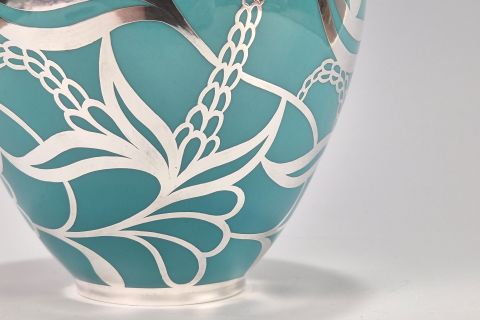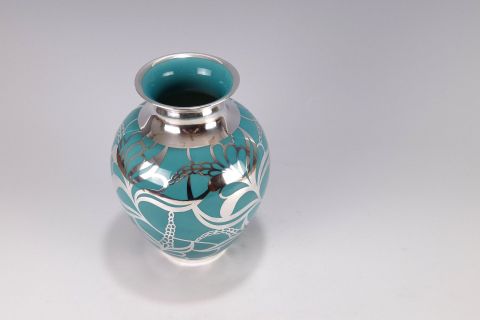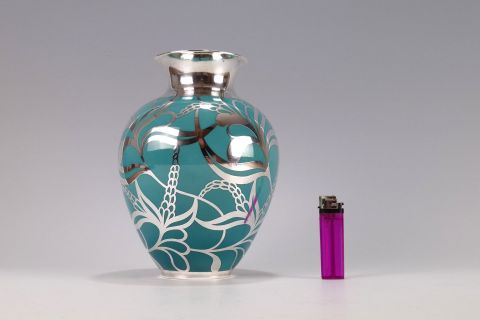The fascination – in addition to the shape and patterns – lies in the combination of two different materials: silver and porcelain/or glass.
Quote from Wikipedia:
Friedrich Wilhelm Spahr (* March 31, 1900 in Esslingen am Neckar; † officially March 31, 1945) was a designer and manufacturer of silver overlays on porcelain and glass (formerly known as silver-plated goods).
Silver overlay is – in simple terms – the electrolytic silver plating of non-conductive surfaces.
Friedrich Deusch (born 1855 in Pforzheim) is considered the inventor of this technology. He began his first experiments in Berlin in 1895 and moved to the "Silver City" of Schwäbisch Gmünd in 1901. The Deyhle Brothers company (founded in 1820, discontinued in 1998/99) also produced silver overlays, as did the Alfred and Manfred Veyhl silver porcelain manufactory in Plüderhausen near Schwäbisch Gmünd (founded in 1928, acquired by Deusch & Co. in 1989). Objects have also been attributed (although not confirmed) to Adolf Besson KG (founded 1892–2010).
Friedrich Wilhelm Spahr likely learned this craft at the Deusch company, also based in Schwäbisch Gmünd (then the Deusch & Co. metal porcelain factory, founded in 1912). Early works by Deusch and later works by Spahr show clear parallels in their formal and color elaboration.
On July 1, 1937, Spahr founded his own manufactory, Spahr & Co. / Silver Plated Ware Factory, in Schwäbisch Gmünd. It was located at Gemeindehausstraße 6 and likely employed approximately 40 people in various disciplines (porcelain painters, electroplaters, and engravers). At the time, the company advertised "silver porcelain and silver crystalware with engravable fine silver plating."
Spahr's early works, in particular, demonstrate his own distinctive formal language in the Art Deco style. Typical of these works is the perfect arrangement of relatively small, curved surfaces (e.g., vases) with repeating motifs that surround the entire work (either purely abstract or with stylized floral elements such as leaves and blossoms, but also birds, dragonflies, etc.).
Spahr's work consisted primarily of porcelain (e.g., vases, mocha sets, plates); however, he also worked on glass, for example, glassware. B. by the well-known glass designer Jean Beck from Munich (1862–1938) or silver-plated by WMF (here too, mostly vases or drinking glasses). These were always the company's own decorative designs.
The finished pieces were usually stamped with a silver hallmark (initially "Spahr 1000 10", later "Spahr 1000"; more rarely, porcelain was stamped with "Spahr 1000 10" in black lettering, and towards the end, transparent adhesive labels with the black inscription "Spahr Fine Silver Plating 1000/1000" were used). The thick (tactile) silver coating is common to all of the companies mentioned (in contrast, for example, to Bohemian or Venetian glassware with a thin silver overlay). The silver content was indicated as "1000" as the purest form of silver.
Friedrich Wilhelm Spahr mostly refined raw ware or bisque-fired porcelain from brands (e.g., Hutschenreuther, Rosenthal, Bavaria). He not only decorated the surfaces with silver, but also created his own colored glazes and painted them. There are also numerous objects with finely engraved silver areas. All of the combined manufacturing processes were extremely complex, making the finished products very expensive. Therefore, these were often offered for sale by jewelers (rarely preserved adhesive labels from jewelry stores attest to this). Thus, they were never affordable mass-produced items. Rather, they were exclusive, one-off pieces or small series.
Spahr & Co. was likely temporarily closed approximately four years after its founding (i.e., in 1940). The entries in the trade directory (Schwäbisch Gmünd City Archives) end here. The company was presumably classified as not essential to the war effort. Friedrich Wilhelm Spahr was officially declared dead in 1953 (dated March 31, 1945). This suggests that he lost his life in combat. His widow, Erika Spahr (née Daibler), continued to run the factory after the war until 1959, when she sold it to the Deyhle company. The company was finally closed in 1982.
